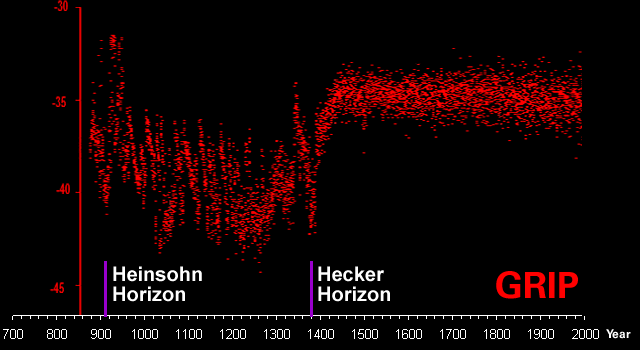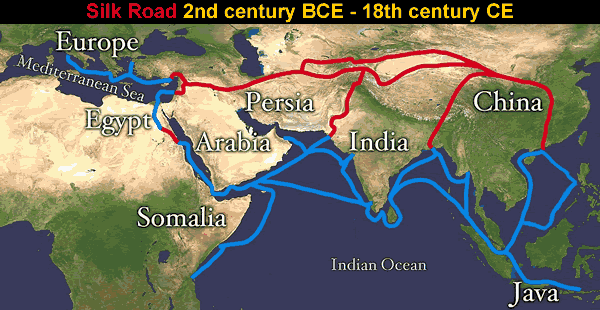It’s unlikely travellers on the Road to Damascus will convert to catastrophism or challenge the chronology but travellers on the Road to Aleppo have an opportunity to observe the pieces of the puzzle falling into place.
Turbulent Times
Digging into the Alaskan Muck has unearthed two pieces of the puzzle.
#1 There were periods of violent erosion followed by periods of quiescence.
The total of these evidences indicates the alternate and intermittent periods of violent erosion such as would dismember animal remains and splinter trees, interspersed with other periods of comparative quiescence so as to allow the growth of “forests” and peat bogs in the same area.
Archaeological Aspects of the Alaska Muck Deposits – Frank C Hibben – 1941
New Mexico Anthropologist, Volume 5, Number 4
https://digitalrepository.unm.edu/cgi/viewcontent.cgi?article=1189&context=nm_anthropologistSee: https://malagabay.wordpress.com/2019/07/22/alaskan-muck-layer-cake/
#2 These violent oscillations occurred between 900 and 1400 CE.
Episodes of “violent erosion” interspersed with periods of “comparative quiescence” provides the key to understanding the oscillations that are so very visible in the Greenland ice cores during the turbulent 500 years beginning around 900 CE at the Heinsohn Horizon and ending with the Hecker Horizon at 1400 CE.
See: https://malagabay.wordpress.com/2019/07/17/alaskan-muck-when-then-was/
Age of Ground Ice
…
In the area studied by the writer an age of 500 to 1,000 years is indicated.The Canning River Region, Northern Alaska
Ernest de Koven Leffingwell – 1919
United States Geological Survey – Professional Paper 109
http://pubs.usgs.gov/pp/0109/report.pdfSee: https://malagabay.wordpress.com/2019/08/07/alaskan-muck-the-canning-river-region/
The Road To Aleppo
Taking the tour to Aleppo makes these turbulent times tangible.
Aleppo is one of the oldest continuously inhabited cities in the world; it may have been inhabited since the 6th millennium BC.
https://en.wikipedia.org/wiki/Aleppo
https://en.wikipedia.org/wiki/Silk_Road
For centuries, Aleppo was the largest city in the Syrian region, and the Ottoman Empire’s third-largest after Constantinople and Cairo.
The city’s significance in history has been its location at one end of the Silk Road, which passed through Central Asia and Mesopotamia.
…
Aleppo lies about 120 km (75 mi) inland from the Mediterranean Sea, on a plateau 380 m (1,250 ft) above sea level, 45 km (28 mi) east of the Syrian-Turkish border checkpoint of Bab al-Hawa.The city is surrounded by farmlands from the north and the west, widely cultivated with olive and pistachio trees. To the east, Aleppo approaches the dry areas of the Syrian Desert.
https://en.wikipedia.org/wiki/Aleppo
The King’s Highway was a trade route of vital importance in the ancient Near East, connecting Africa with Mesopotamia. It ran from Egypt across the Sinai Peninsula to Aqaba, from where it turned northward across Transjordan, leading to Damascus and the Euphrates River.
https://en.wikipedia.org/wiki/King%27s_Highway_%28ancient%29
Regime Change in Aleppo
These turbulent times are conspicuous in Aleppo’s Regime history.
https://en.wikipedia.org/w/index.php?title=Ancient_City_of_Aleppo&oldid=910832548
The Aleppo Regime history suggests “periods of violent erosion” initially occurred [roughly] every 35 years before drifting out to every 55 years and then every 77 years.
https://en.wikipedia.org/w/index.php?title=Ancient_City_of_Aleppo&oldid=910832548
Note
The triple-regime-years of 1400 & 1260 suggest historians completely lost the plot at the Hecker Horizon [1400 to 1300 CE].
The beginning of these turbulent times coincides with the abandonment of 700 settlements [aka Dead Cities] situated between Aleppo and Idlib.
The Dead Cities or Forgotten Cities are a group of 700 abandoned settlements in northwest Syria between Aleppo and Idlib.
…
Most villages which date from the 1st to 7th centuries, became abandoned between the 8th and 10th centuries.The settlements feature the well-preserved architectural remains of dwellings, pagan temples, churches, cisterns, bathhouses etc. Important dead cities include the Church of Saint Simeon Stylites, Serjilla and al Bara.
The Dead Cities are situated in an elevated area of limestone known as Limestone Massif.
Even before the war relatively few of the Dead Cities had any archaeological excavations taking place, and unfortunately the majority of people living in close proximity to them have no understanding of their importance.
The Citadel of Aleppo
During these turbulent years the citadel and city walls underwent “improvements” and “major reconstruction” when they weren’t being “rebuilt” or “fortified” or “strengthened”.
The Citadel of Aleppo is a large medieval fortified palace in the centre of the old city of Aleppo, northern Syria.
…
Muslim troops captured Aleppo in 636 AD.Written sources document repairs being made on the citadel after a major earthquake.
Little is known about the citadel in the period of early Islam, except that Aleppo was a frontier town on the edges of the Ummayad and Abbasid empires.
Sayf al-Dawla, a Hamdanid prince, conquered the city in 944, and it subsequently rose to a political and economic renaissance.
The Hamdanids built a reputedly splendid palace on the banks of the river, but moved to the Citadel after Byzantine troops attacked in 962.
A period of instability followed the Hamdanid rule, marked by Byzantine and Beduin attacks, a short-term rule by the Egyptian-based Fatimids. The Mirdasids were said to have converted the two churches into mosques.
…
The citadel rose to the peak of its importance in the period during and after the Crusader presence in the Near East. Zengid ruler Imad ad-Din Zengi, followed by his son Nur ad-Din (ruled 1147–1174) successfully unified Aleppo and Damascus and held back the Crusaders from their repeated assaults on the cities. Several famous crusaders were imprisoned in the citadel, among them Count of Edessa, Joscelin II, who died there, Raynald of Châtillon, and the King of Jerusalem, Baldwin II, who was held for two years. In addition to his many works in both Aleppo and Damascus, Nur ad-Din rebuilt the Aleppo city walls and fortified the citadel.Arab sources report that he also made several other improvements, such as a high, brick-walled entrance ramp, a palace, and a racecourse likely covered with grass. Nur ad-Din additionally restored or rebuilt the two mosque and donated an elaborate wooden mihrab (prayer niche) to the Mosque of Abraham. The mihrab disappeared during the French Mandate.
Saladin’s son al-Zahir al-Ghazi ruled Aleppo between 1193 and 1215.
During this time the citadel went through major reconstruction, fortification and addition of new structures that create the complex of the Citadel in its current form today.
Sultan Ghazi strengthened the walls, smoothed the surface of the outcrop and covered sections of the slope at the entrance area with stone cladding. The depth of the moat was increased, connected with water canals and spanned by a tall bridge-cum-viaduct, which today still serves as the entrance into the Citadel.
During the first decade of the thirteenth century the citadel evolved into a palatial city that included functions ranging from residential (palaces and baths), religious (mosque and shrines), military installations (arsenal, training ground, defence towers and the entrance block) and supporting elements (water cisterns and granaries). The most prominent renovation is the entrance block rebuilt in 1213. Sultan Ghazi also had the two mosques on the Citadel restored, and expanded the city walls to include the southern and eastern suburbs, making the citadel the centre of the fortifications, rather than alongside the wall.
…
The citadel was damaged by the Mongol invasion of 1260 and again destroyed by the invasion led by the Transoxian leader Timur which swept through Aleppo in 1400–1401.In 1415 the Mamluk governor of Aleppo, prince Sayf al-Din Jakam, was authorized to rebuild the citadel, which by then stood at the centre of a significant trading city of between 50,000–100,000 inhabitants.
Sayf al-Din’s additions included two new advance towers on the north and south slopes of the citadel, and the new Mamluk palace built on top of the higher of the two entrance towers.
The Ayyubid palace was almost completely abandoned during this period.
The Mamluk period also administered restoration and preservation projects on the Citadel. The final Mamluk sultan, Al-Ashraf Qansuh al-Ghawri, replaced the flat ceiling of the Throne Hall with 9 domes.
….
During the Ottoman period, the military role of the citadel as a defense fortress slowly diminished as the city began to grow outside the city walls and was taking its form as a commercial metropolis.https://en.wikipedia.org/wiki/Citadel_of_Aleppo
Aleppo became part of the Ottoman Empire in 1516, when the city had around 50,000 inhabitants, or 11,224 households according to an Ottoman census.
#3 The Phantom Years
The Regime history for Aleppo is remarkably revealing.
Working backwards in time it’s very evident the Roman Empire narrative is a chronologically detached distortion [aka fictional appendage] added onto the history of Aleppo.
In fact, the extended “rise and fall” Roman Narrative is a textbook example of Gunnar Heinsohn’s 700 Phantom Years aka the Phony Papal Provenance.
https://en.wikipedia.org/w/index.php?title=Ancient_City_of_Aleppo&oldid=910832548
Working backwards through the mainstream historical narrative we arrive at the Heinsohn Horizon in the 930s where the mainstream narrative falls into The Academic Abyss and degenerates into fiction, fantasy and fabrication for a period of 700 [phantom] years.
See: https://malagabay.wordpress.com/2015/07/01/the-heinsohn-horizon-the-academic-abyss/
See: https://malagabay.wordpress.com/2017/09/11/the-heinsohn-horizon-and-the-migration-period/
The good news for Gunnar is that his 700 Phantom Years are year perfect if Aleppo actually fell in 636 AD i.e. 64 BC + 636 AD = 700 years.
Muslim troops captured Aleppo in 636 AD.
https://en.wikipedia.org/wiki/Citadel_of_Aleppo
Soon after Aleppo fell to Muslims under Abu Ubaidah ibn al Jarrah in 637.
The bad news for Gunnar is that these 700 Phantom Years extend back into the BC era and reinforce the view that the [mainstream] Roman Narrative is pure pulp fiction.
The origins of the Roman Empire narrative can be traced back to Medieval times when the life and times of Jesus of Nazareth turned history into a Two Act Play with Act I based upon the “Old Testament” and Act II based upon the “New Testament”.
The success of the Two Act Play encouraged the authors to improvise a Third Act that provides an impressive provenance for the production company.
The Roman Empire narrative was cobbled together by liberally borrowing historic characters, storylines and artefacts that were excluded from the Two Act Play.
See: https://malagabay.wordpress.com/2019/01/18/the-roman-empire-in-three-acts/
#4 The Three Horizons
The Regime history for Aleppo very clearly highlights three horizons where the narrative has been “restored” after a catastrophic break.
https://en.wikipedia.org/w/index.php?title=Ancient_City_of_Aleppo&oldid=910832548
See: https://malagabay.wordpress.com/2019/05/08/fiery-trigons-great-mutation-cycle/
See: https://malagabay.wordpress.com/2019/05/15/fiery-trigons-1st-millennium-diagnosis/
See: https://malagabay.wordpress.com/2019/05/16/fiery-trigons-3rd-millennium-prognosis/
Travellers on the Road to Aleppo may arrive at different destinations†.
† Court Historians and Earth Scientists can continue to enjoy their preconceived all-inclusive itineraries with an exciting educational program designed to meet their very special needs.
Road to Rio is a 1947 American semi-musical comedy film directed by Norman Z. McLeod and starring Bing Crosby, Bob Hope, and Dorothy Lamour.
https://en.wikipedia.org/wiki/Road_to_Rio
Camino a Bali es una comedia musical cinematográfica de 1952 dirigida por Hal Walker, con Bing Crosby, Bob Hope y Dorothy Lamour como actores principales.
https://es.wikipedia.org/wiki/Camino_a_Bali


















A ‘GRIP’ DIAGRAM QUESTION:
…..II..Do we have here a change of Suns? & Here a stabilization?
……II…………………………………………………II………….IIIIIIIIIIIIIIIIIIIIIIIIIIIIII
…….II……………………………………………..II….II……..IIIIIIIIIIIIIIIIIIIIIIIIIIIIIIIIIi
……..II……..II……………II………………….II………II…..IIIIIIIIIIIIIIIIIIIIIIIIIIIIIIIII
……….II…II….II………II….II…………….II…………..II…I
…………II………II….II……….II……….II……………..II..I
……………………..II…………….II….II…………………II
………………………………………..II
A thrilling article with ever so profound consequences, thank you Tim.
Yry
Pingback: Alaskan Muck: Prime Suspects | MalagaBay
Pingback: Alaskan Muck: Sol Invictus | MalagaBay
Pingback: The Dodwell Dead End | MalagaBay
Pingback: Three Flavours of 700 Year Old Fudge | MalagaBay
Pingback: Arabian Horizon: Battle of Yarmouk | MalagaBay
Pingback: Conformist Crusades | MalagaBay